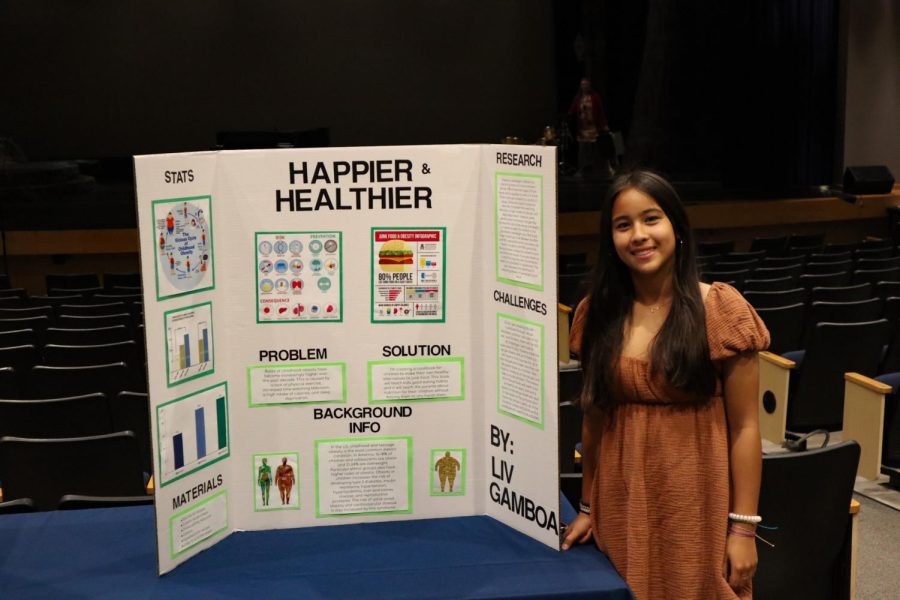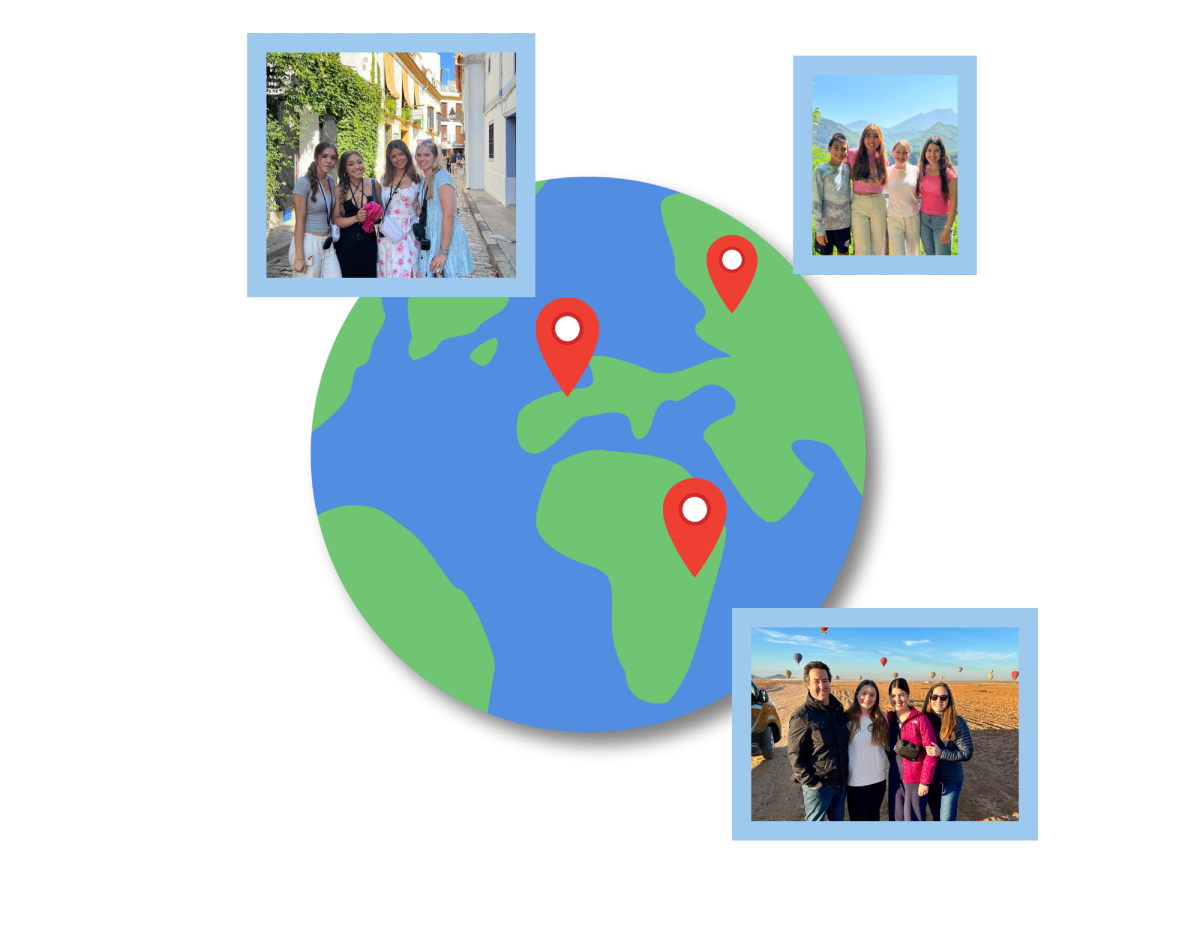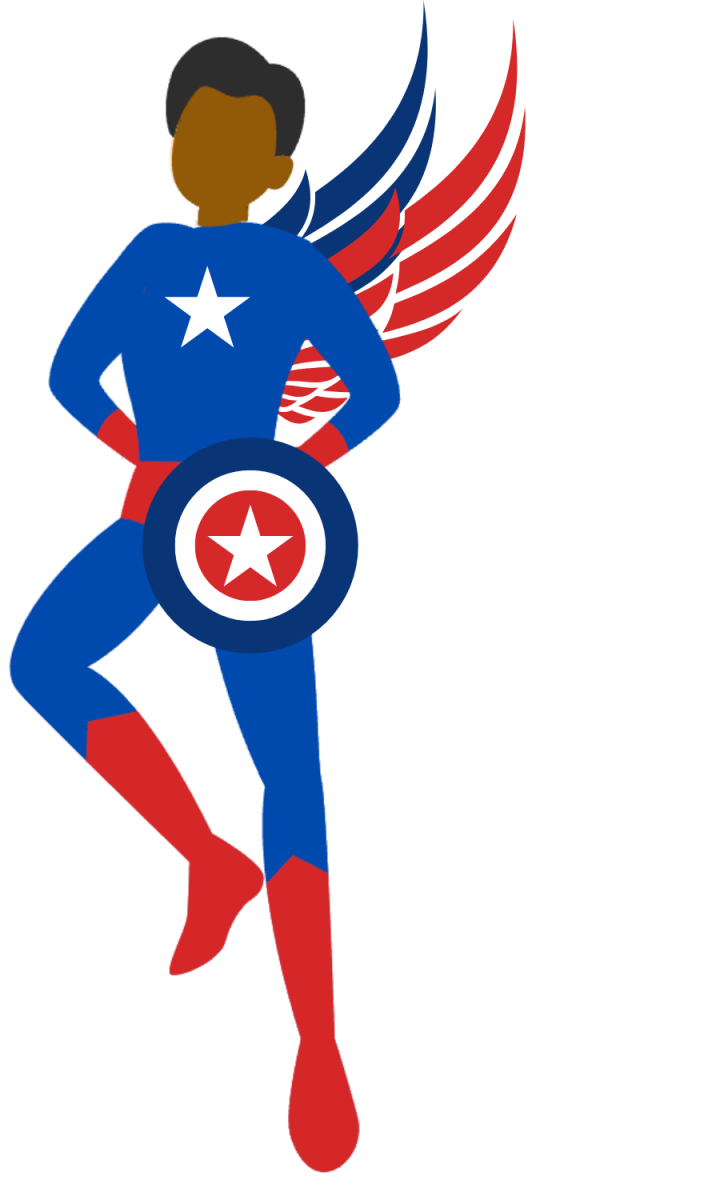Last year, freshman Olliver Polsinelli trained his dog into a therapy dog to aid people in need of mental support. Polsinelli continues to bring his dog into facilities such as blood drives, hospitals, nursing homes, and Polsinelli’s favorite facility, children’s libraries.
“There was this one kid with developmental issues, and he was really nervous because he wasn’t really confident in his reading skills,” Polsinelli said. “As the little kid read to the dog, he seemed a lot more confident in his reading and he seemed he was proud of himself.”
In eighth grade, students spend 20% of their time in civics on the 20 Time Project, where students help their community in various ways, and this is how Polsinelli was able to train his dog. This is just one of many creative ways project-based learning can benefit students.
While not new at Trinity Prep, project-based learning is becoming more popular in schools across the country as modern workplaces require many communication and presentation skills. Director of Learning Stephanie Dryden believes this type of assessment allows students to work in a more real-world setting than a paper-pencil test.
“Project based learning is when you give students a real life problem to solve and then scaffold backwards,” Dryden said.
Every year, Dryden collaborates with teachers on the curriculum. Dryden suggests that coursework should go beyond just improving test scores but should prepare students in other ways as well.
“I think what we need to work on as a big picture question is how to harness student creativity,” Dryden said. “How to help guide them and channel them to develop that creativity.”
Dryden is not the only person pushing for different ways to promote creativity. Edutopia.org says many school districts have been testing project-based learning, with more and more schools sticking to it each year.
World Language Department Chair Vanessa Spallone has drastically shifted her curriculum focus into project-based learning in recent years.
“When I was a younger teacher at the very beginning of my career, I was a lot more traditional in the way I taught,” Spallone said. “Now I feel like I have adopted more of a communicative approach, meaning I really want the kids to express themselves.”
This transition is for good reason. Grand Valley State University says project-based learning isn’t only effective for academic achievement, but also for motivating students. Spallone agrees with this because she thinks the final audience is the largest motivation factor for students in learning.
“When you’re working on a project and then you have that audience at the end for your summative piece, I think you’re more invested,” Spallone said. “You know that people are going to look at it and not just the teacher.”
A study by the University of Southern California involved 3600 AP students taking either project or test-based learning in science and history over the course of two years. In the second year, the project-based learning students scored 10% better than the test-based learning students on their exams.
While studies show project-based learning improves test scores, eighth grade Social Science teacher Anthony Todaro believes project-based learning’s main purpose is for skills a student can’t harness simply by writing answers on a piece of paper.
“[Project-based learning] helps students work on their collaboration skills, their teamwork skills, their communication skills in a more professional setting,” Todaro said.
Apart from communication and collaboration, project-based learning also provides opportunities to demonstrate real-life connections. This is why Spallone prefers project-based learning and implements many projects in her classes’ curriculums.
“In the final product I tried to make it as connected to real life as possible,” Spallone said. “It could be a tourism guide, it could be something that someone from the outside might be interested in looking at, it could be an advertisement for a product, it could be so many things.”
Project-based learning is not for all classes, however. Senior Andrew Lopez believes classes such as math should primarily be test-based courses.
“If we’re doing math or physics, I would probably retain more,” Lopez said. “I think I do retain more from test-based learning.”
There are many classes suitable for project-based learning, and eighth grade Science teacher Sara Dowdy believes science is the perfect course for project-based learning.
“I just don’t think you can learn science from a lecture,” Dowdy said. “You need to be actively involved in your learning.”
In Spallone’s opinion, World Language classes are also great for projects as there are so many opportunities to use creativity in language learning.
“You have the culture, the geography, the history, there’s so many pieces to it,” Spallone said. “We can touch on so many different things.”
While there are many positives to moving to project-based learning in most classes, there are also positives to staying with test-based learning. Lopez believes test-based learning teaches skills useful for AP classes.
“It’s a skill to read a textbook,” Lopez said. “If you really learn how to take tests and how to study for tests, that’s pretty important to learn.”
Todaro thinks there should be a good balance between project and test-based learning depending on the class as they both carry certain strengths.
“A majority of classes should be able to apply both,” Todaro said. “Kids learn different skills that are important from both types of assessment methods.”
Dryden agrees with Todaro. Dryden believes a balance of both types of learning is perfect for students.
“I do feel that it’s important to be committed to doing both test-based and project-based learning,” Dryden said. “To have that mix together.”
While project-based learning has its pros and cons, it looks to be the future in modern education as schools have come to multiple revelations about preparing students for college and beyond.
“In life, truly it’s all projects,” Dowdy said. “Everything you do, problem solving, critical thinking, coming up with answers on your own.”













